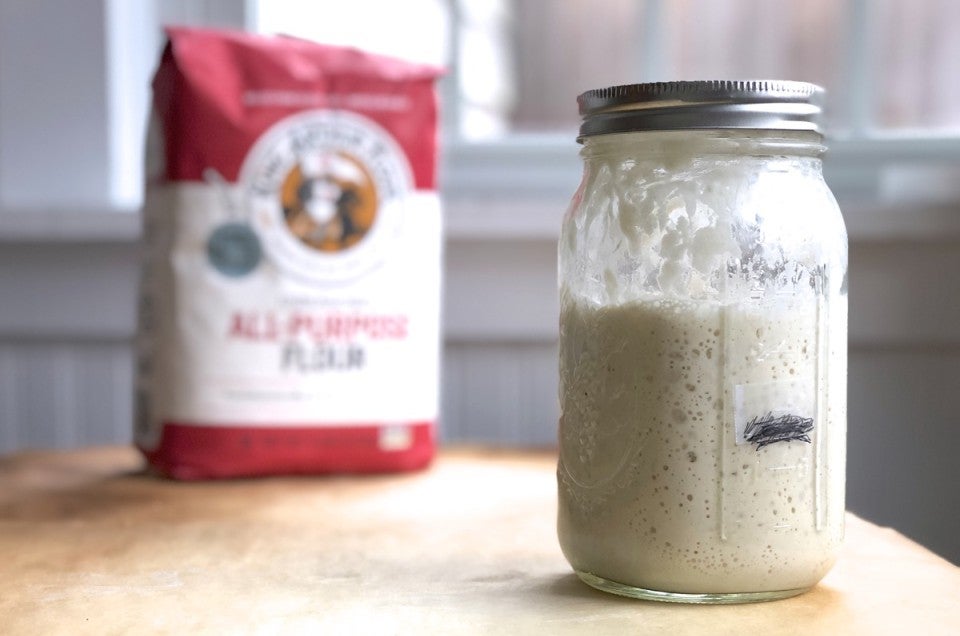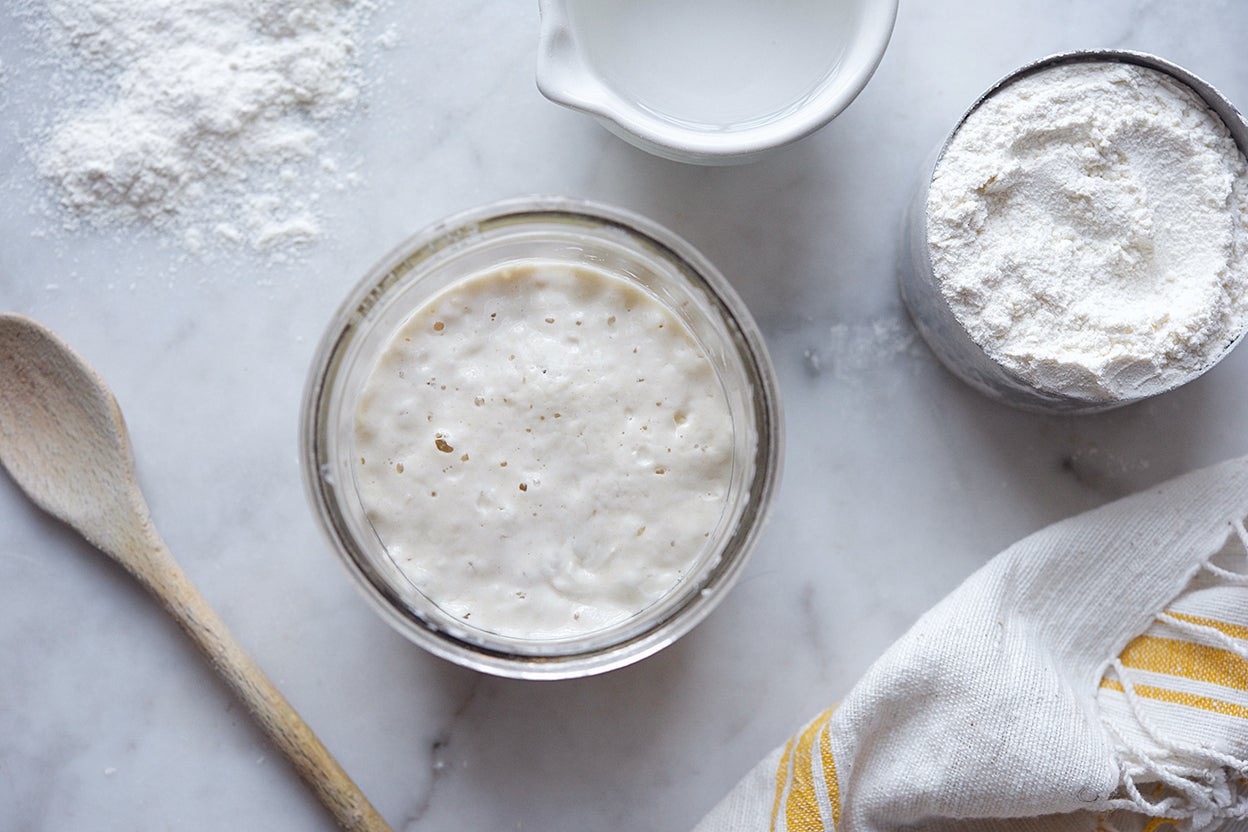
How To Feed Your Sourdough Starter at a Glance Remove and discard half of your sourdough starter. Feeding using and refeeding the starter is a cycle.

You all MUST know by now that when I make bread at home it has to be three things.
How to feed bread starter. Feed the starter by adding water and floor. If using a scale to measure ingredients combine equal volumes by weight of starter water and flour. For instance 50 grams starter 50 grams water 50 grams flour.
If using measuring cups combine one-part starter one-part water and a. Feed the starter with flour and water every 8-12 hours using one of the following methods. If using a scale to measure ingredients combine equal amounts by weight of starter water and flour.
For instance 50 grams of starter 50 grams of water 50 grams of flour. You feed 4 oz of starter with 4 oz of water and 4 oz of flour. When that is ready and active you can use the amount of starter called for in your recipe.
Then feed the starter again to bring it back to the starting weight 12 oz. Feeding using and refeeding the starter is a cycle. Once you feed your starter cover the vessel with a breathable lid and leave it alone at room temperature.
After 6 hours more or less repeat the process. Discard most of it and feed it with. How To Feed Your Sourdough Starter at a Glance Remove and discard half of your sourdough starter.
Feed whats left in the jar with equal parts flour and water by weight 111 feeding. To feed your starter firstly use a clean utensil to remove all but 100g of the starter from the jar. Then add 100g flour and 100g water and stir well until evenly combined.
Seal the jar and store at room temperature or in the fridge. You now have 300g of starter. Once youve successfully created your own sourdough starter youll need to store it then feed it once a while.
If you cant feed it twice a day here are th. Bread starter is a combination of flour and water that mixes with wild yeasts and bacteria that are naturally found in the flour air and even your hands to form a culture. This culture feeds on the natural sugars in the flour and must be fed regularly to prevent the depletion of the sugar supply.
You all MUST know by now that when I make bread at home it has to be three things. Puffy a good shape and above all Practical. Thats why my starter feedin.
If your starter is thin flat bubble-less andor starting to separate its time to feed it. This usually happens to neglected starters or starters that are in warm kitchens who quickly metabolize the sugars after each feeding. In general feeding your starter on Day 6 and Day 10 should be sufficient again make sure you are feeding at the.
You can leave the starter in the refrigerator for 3 to 4 days at a time between feedings. We recommend feeding sourdough starter at least twice a week for best results. For the best flavor and sourdough ripeness use your starter in a bread recipe no more than 12-16 hours after youve fed it.
It might be ripe after only 4 hours if its quite active and your kitchen is warm. You can also let the starter go up to 24 hours after a feeding before starting your dough but it. Your start will double in size every time you feed it.
So if you begin with 1 c starter it will turn into two cups after you feed it. Add the same amount of warm water as starter you have and stir it together. Now add a heaping amount of whole wheat flour to your starter.
When it is time to feed again repeat steps 1-4 until you have enough starter for your recipe plus some extra starter to continue feeding for your next baking session. Once you have enough starter for your recipe always prepare your bread dough when the starter is at. How to feed sourdough starter for a specific recipe.
The portion of sourdough starter added to the dough is often referred to as active starter or levain. Simply feed the starter using the amounts called for in the recipe you are using. Our beginners sourdough bread recipe calls for ½ cup 50 g of active starter.
First feeding your starter and making sure it doubles in volume within 4 hours of feeding is a simple test that also sets you up for the very first part of bread baking. It passes the float test The second method is known as the float test. Use a cup of cool water and add about a teaspoon of starter.